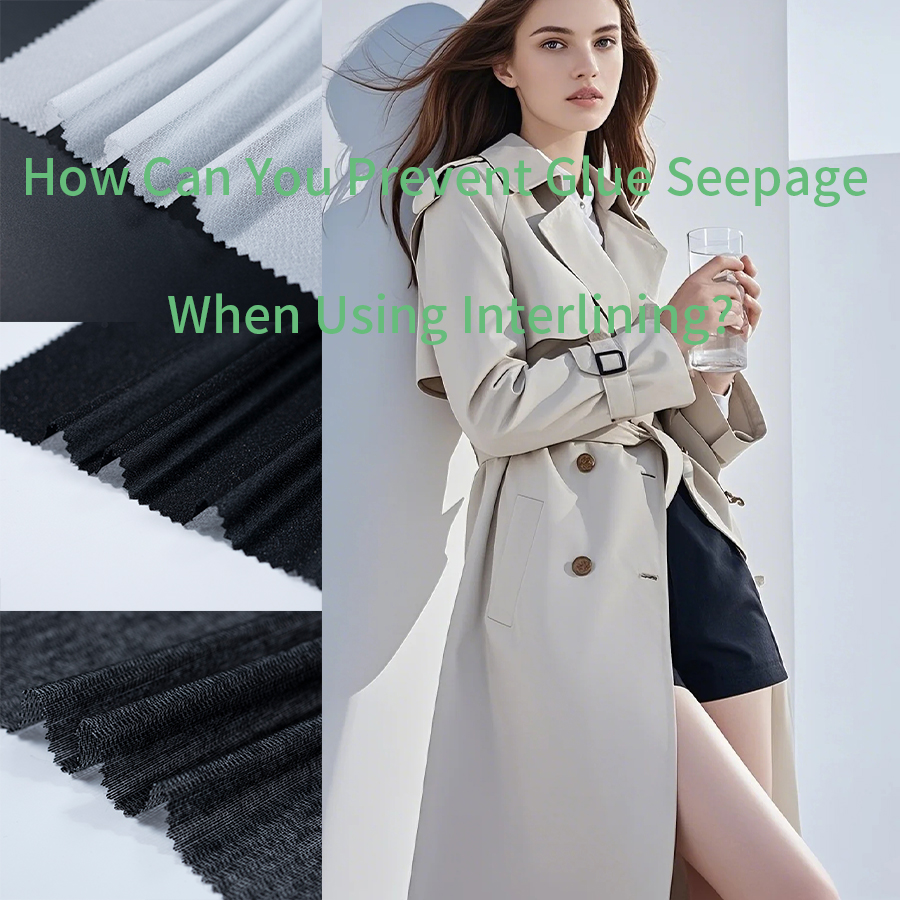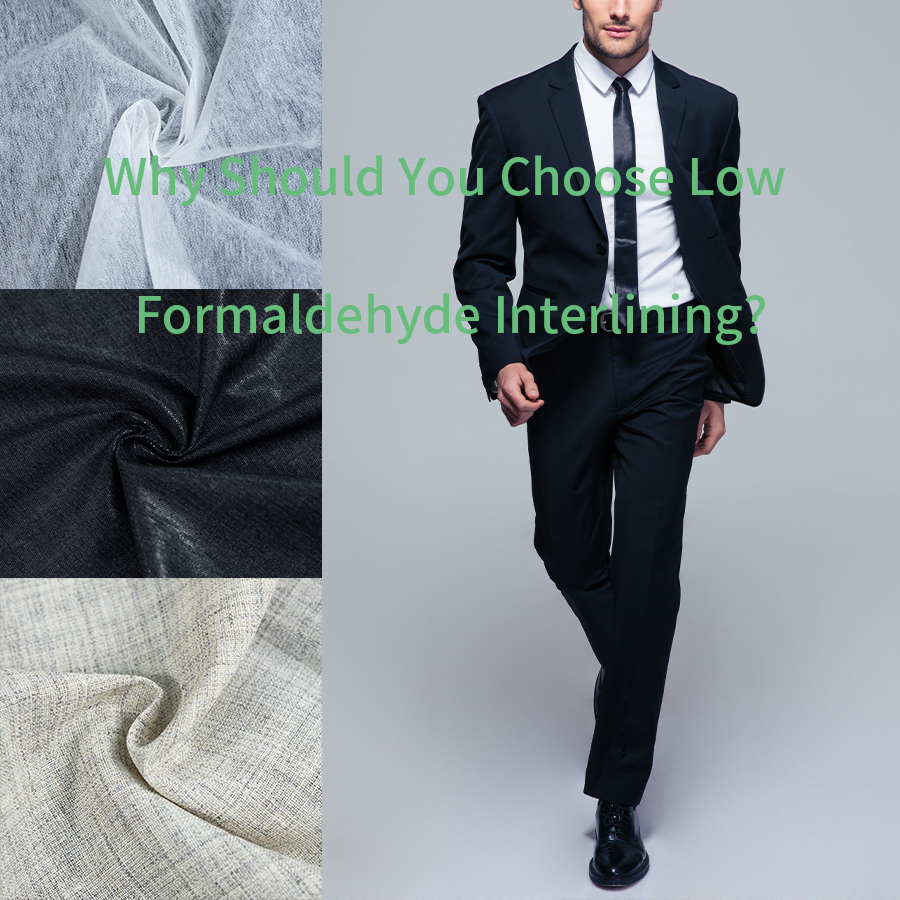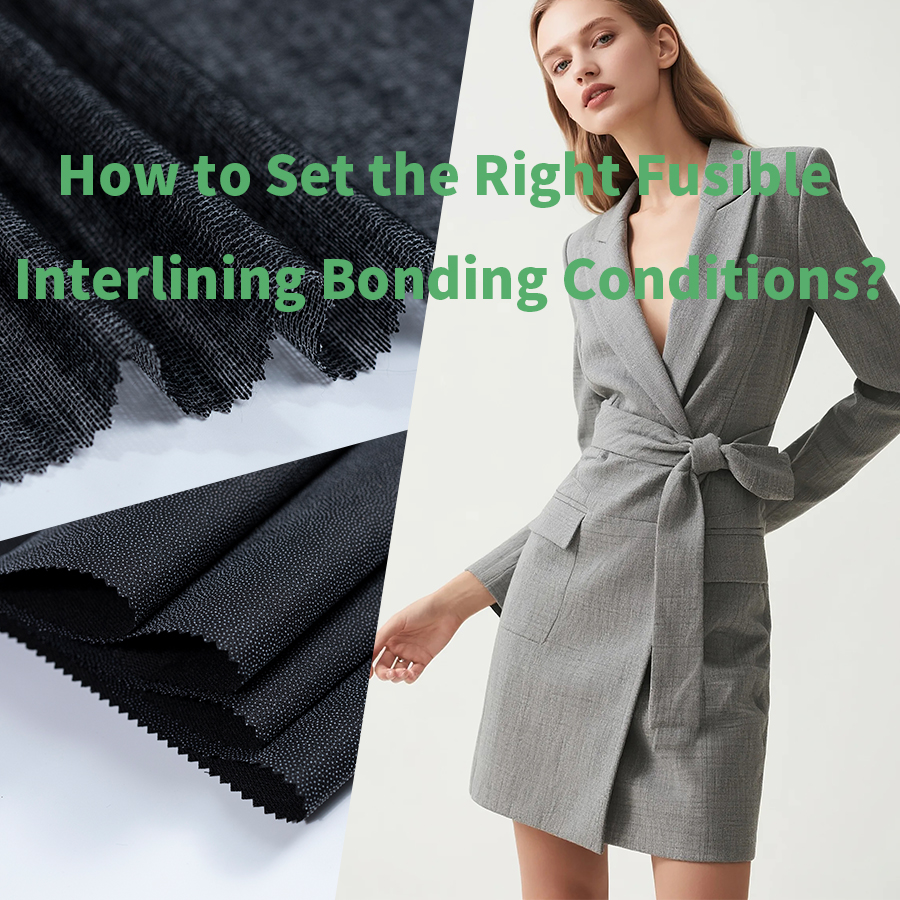How Can You Prevent Glue Seepage When Using Interlining?

Abstract
This article explains why glue seepage when using interlining happens during garment bonding and offers practical ways to prevent it through correct temperature, pressure, and time control.
What Is Glue Seepage When Using Interlining?
Glue seepage when using interlining refers to the issue where the adhesive layer of fusible interlining penetrates through the outer fabric during bonding. It creates visible shiny spots, stiffness, or uneven areas that affect both appearance and hand feel.
This problem usually results from improper bonding conditions, unsuitable interlining selection, or adhesive instability during heat application.
What Causes Glue Seepage in Interlining?
Glue seepage doesn’t occur by chance — it’s typically caused by one or more of the following factors:
1. Excessive Fusing Temperature
When the heat is too high, the adhesive melts excessively and seeps through the outer fabric, especially on lightweight materials like polyester or silk.
2. Excessive Pressure During Bonding
Applying too much pressure can force the molten adhesive into fabric fibers, leaving visible marks or stiffness after cooling.
3. Overextended Fusing Time
If bonding time is too long, the adhesive stays liquid too long and migrates through the fabric structure.
4. Incompatible Fabric and Interlining
Using an interlining that’s too heavy or has an unsuitable adhesive coating can lead to glue seepage when using interlining, especially with delicate fabrics.
5. Poor Fabric Absorbency
Open-weave or thin fabrics are more prone to seepage because adhesive can easily pass through loose fibers.
How to Prevent Glue Seepage When Using Interlining?
1. Adjust Bonding Temperature
Always follow the recommended temperature range provided by your interlining supplier. Test a few fabric samples to find the setting that activates adhesive properly without over-melting.
2. Control Bonding Pressure
Keep pressure moderate and even. Excessive pressure is a major reason for glue seepage when using interlining, as it pushes adhesive beyond its intended layer.
3. Optimize Fusing Time
Reduce dwell time slightly if seepage occurs. Proper timing allows the glue to melt and bond without bleeding through.
4. Choose the Right Interlining
Select interlining with suitable adhesive type and coating weight for your fabric. For thin materials, lightweight microdot adhesive is ideal.
5. Pre-Test Before Bulk Production
Run bonding trials before mass production to verify that both interlining and fabric are compatible.
6. Keep Equipment Clean
Adhesive buildup on machine surfaces can cause secondary glue transfer. Clean regularly to prevent contamination.
What to Do If Glue Seepage Has Already Happened?
-
Gentle Re-Pressing:
Place a clean cloth over the area and lightly re-press to smooth the fabric. -
Use Absorbent Paper:
A thin paper layer can absorb excess adhesive and restore the garment’s surface. -
Mechanical Cleaning:
When dry, carefully remove hardened glue with a non-damaging fabric cleaning tool. -
Adjust Fusing Settings:
Review your temperature, pressure, and time to prevent repeat problems.
FAQ (Frequently Asked Questions)
Q1: Why does glue seep even at normal temperature?
A: The adhesive may have a low melting point, or the fabric is too light for that interlining type.
Q2: How can I ensure compatibility?
A: Perform sample tests and check peel strength before production.
Q3: Can humidity affect bonding?
A: Yes. Moisture can cause uneven heating, increasing the risk of glue seepage when using interlining.
Q4: Can glue seepage be completely avoided?
A: With proper fusing control and interlining selection, it can be almost entirely prevented.
Q5: Does this issue occur in non-fusible interlining?
A: No, it happens only in fusible interlining that contains adhesive coating.
Why Choose Shanghai Uneed Textile Co., Ltd.
At Shanghai Uneed Textile Co., Ltd., we specialize in manufacturing high-quality fusible interlining designed to minimize glue seepage when using interlining and ensure reliable bonding performance.
-
Advanced Coating Technology: Uniform adhesive coating for stable bonding results.
-
Comprehensive Testing: Each batch is tested for peel strength, washing durability, and bonding stability.
-
Professional Support: We provide technical guidance for temperature, pressure, and fusing time settings.
-
Wide Product Range: Interlinings for shirts, suits, uniforms, and specialty fabrics.
-
Global Reliability: Fast delivery, stable quality, and expert after-sales service.
Choose Uneed Textile for smoother bonding, better fabric quality, and stronger garments.
continue reading
Related Posts
This article explains why glue seepage happens during fusible interlining bonding and offers practical solutions to prevent it through proper heat, pressure, and material selection.
Discover the benefits of using low formaldehyde interlining for safer, eco-friendly garments that meet international standards. Ideal for comfort, health, and quality.
This article explains how to set temperature, pressure, and time for fusible interlining bonding to ensure strong adhesion and smooth garment results.



.png)